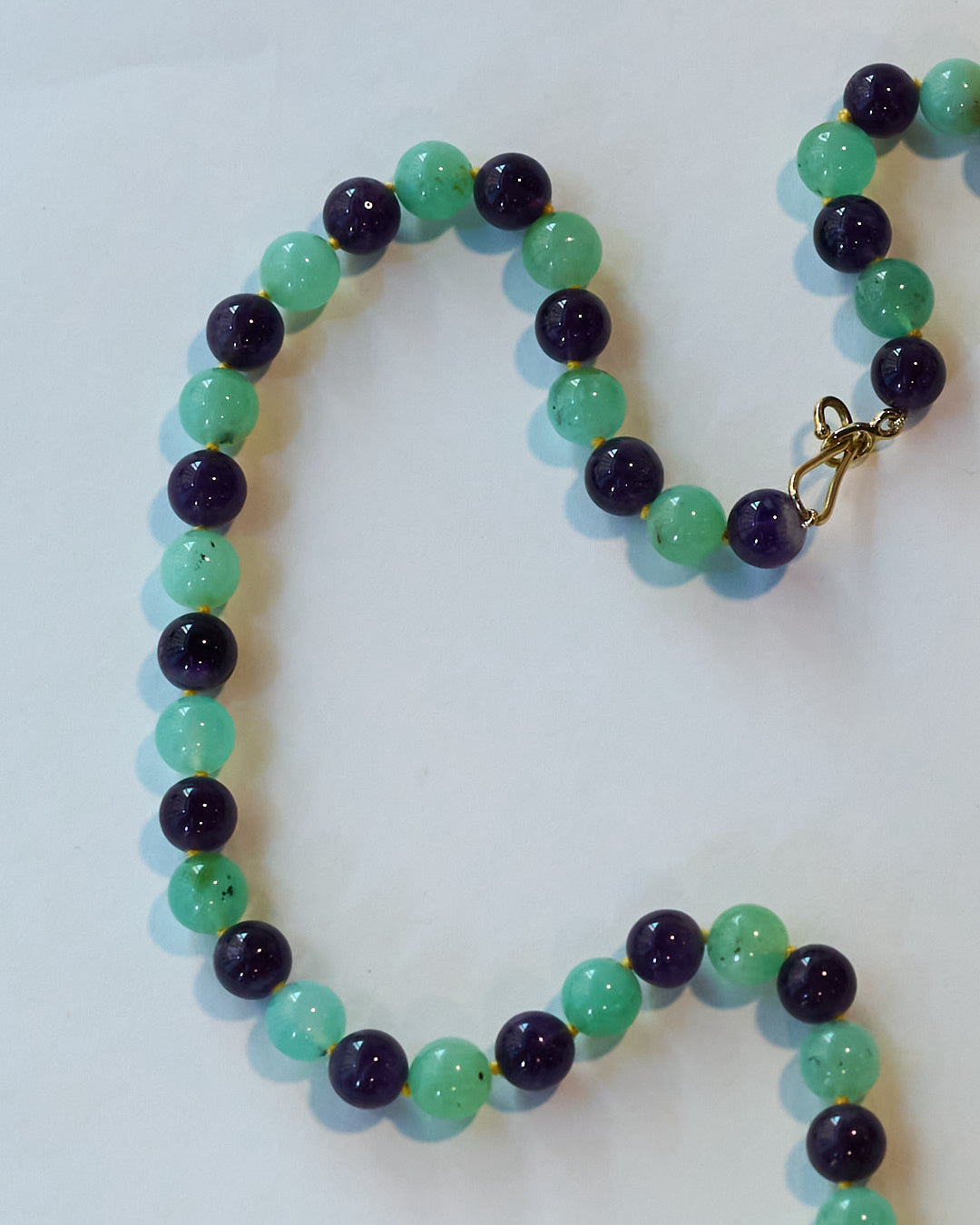
How a Necklace Is Made: From Rough Stone to Silk Thread
Share
Every necklace tells a story.
But before it’s worn, before it’s even a necklace, it begins as a handful of raw stones, a coil of silk thread, and a quiet process of selection, shaping, and assembly.
This is slow jewelry. And here is how it’s made.
The Stones: Raw, Rare, and Real
The process begins with the stones themselves. Mikkel selects each one by hand, often uncut, sometimes from small ethical sources, occasionally vintage or repurposed. These are not the polished, perfect beads you find in mass-market strands. These are stones with presence: some cloudy, some veined, some nearly translucent, all alive with natural texture.
Rather than force them into uniformity, Mikkel lets their individuality lead. Many are shaped only slightly, polished, not faceted, to preserve the softness and truth of their form.
2. The Palette: A Composer’s Eye
Every necklace begins as a visual dialogue. Mikkel lays out potential combinations on his studio bench, rearranging them like a painter might rearrange pigments. This is where his background in design, and his training in lapidary, come together.
Cool tones balance heat. A single baroque pearl punctuates an otherwise moody strand. Color, weight, rhythm, all are considered.
Sometimes the palette comes together instantly. Other times it takes weeks.
3. The Thread: Silk, Always
Each necklace is strung by hand on silk thread, a traditional method rarely used in modern jewelry production. Silk is strong yet soft, allowing the stones to drape naturally along the neckline. It adds a quiet luxury that isn’t visible, but always felt.
Knots are sometimes tied between stones. Other times, the rhythm is uninterrupted. But always, the thread is essential, it holds the story together.
4. The Clasp: A Signature in Metal
To close each piece, Mikkel forges a custom clasp in his Malmö studio. These closures are minimal, often hand-formed in sterling or gold, and always proportionate to the necklace’s tone, never distracting, but always intentional.
It’s the final touch. The signature. The sculptural counterweight to the organic stones.
The Final Test: Does It Feel Like You?
A necklace isn’t finished until it has been worn, not just tested, but felt. Mikkel is known to wear new strands around the studio for a day or two, checking how they move, how they fall, how they hold their shape.
If it doesn’t feel alive, it doesn’t leave the bench.
These necklaces are not designed by algorithm. They are built by instinct, skill, and an uncommon respect for material. They take time. They take care.
And in wearing one, you take part in that process.





